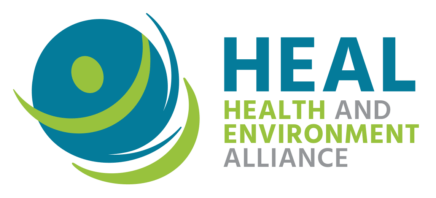Press release: HEAL, together with the EDC-Free Europe coalition, is calling on future EU leaders to protect health and the environment from health-harming endocrine-disrupting chemicals. The coalition shared its priorities for the upcoming policy mandate at an event at the European Parliament.
The Ban PFAS manifesto [1] was presented today to European Commission Vice President Timmermans’ and Commissioner Sinkevičius’ members of cabinets and policy officers working on REACH [2]. The manifesto by 119 organisations from over 25 countries, calls for the ban of per- and polyfluorinated alkyl substances (PFAS) in consumer products by 2025 and a complete ban by 2030.
The signatories include health and environmental organisations, medical associations and community groups, all alarmed about the scale of PFAS contamination. They demand swift action from the European Commission to address the emergency, especially in light of the recent cross-country media investigation that unveiled over 17,000 contaminated sites in Europe [3].
The PFAS manifesto calls for the European authorities to develop legislation in order to stop adding to the PFAS burden on health and the environment. The organisations highlight that the scale of the contamination illustrates the current weaknesses in the REACH legislation and the urgent need to reform it, and they support the universal PFAS restriction proposal submitted by Denmark, Germany, Norway, Sweden and the Netherlands [4]. Finally, they also call on European and national authorities to address existing pollution and ensure that the burden of costs is borne by polluters, not taxpayers.
“A complete phase-out of all PFAS production and use is possible by 2030, through the restriction of the whole PFAS group under REACH, and the swift adoption of other restrictions currently in the pipeline. PFAS pose an unacceptable risk for both current and future generations due to their extreme persistence, and the growing scientific evidence of their harmful impacts on wildlife and human health.” Natacha Cingotti, Health and Chemicals Programme Lead at the Health and Environment Alliance stressed to the European Commission.
Background:
Per- and polyfluorinated alkyl substances (PFAS) are a large group of widely utilised synthetic chemicals, used for example in clothing, cosmetics and food packaging. They have been scientifically proven to be dangerous to our health and environment, and they are found nearly everywhere [5]. PFAS bioaccumulate in our bodies, animals and the environment, as they do not break down easily. Over 12.5 million Europeans are estimated to be living in communities with drinking water polluted by PFAS [6].

